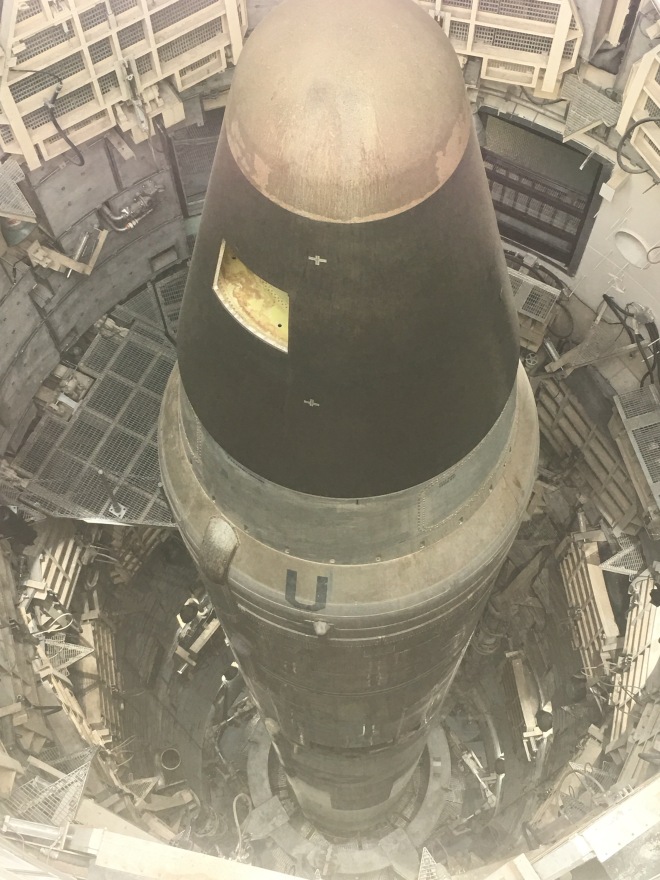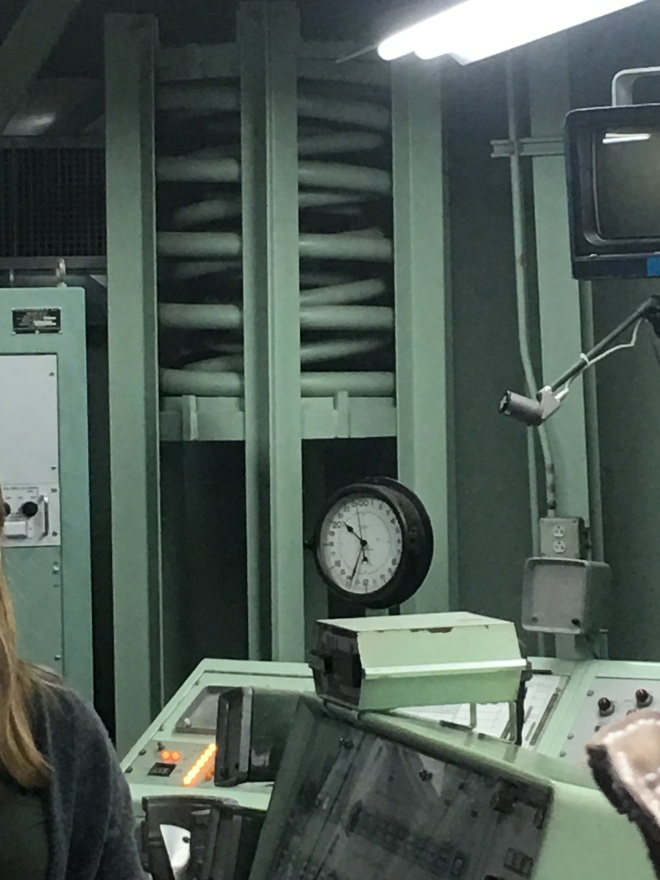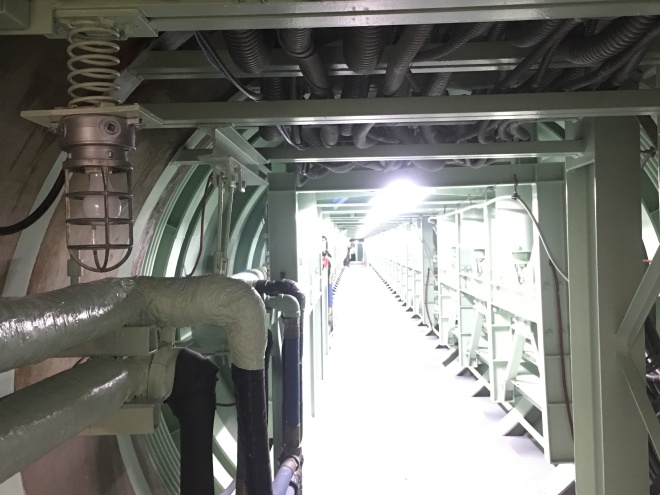
 I’m not gonna lie, I wasn’t as excited to visit the Titan II Missile Silo as Mike, but I was pleasantly surprised. There is so much history there that I could type for pages, so if you want the full story you’re going to have to make your own trek to the desert. I will, however, give you a preview of the main attraction. Sort of like speed dating with history. Here we go!
I’m not gonna lie, I wasn’t as excited to visit the Titan II Missile Silo as Mike, but I was pleasantly surprised. There is so much history there that I could type for pages, so if you want the full story you’re going to have to make your own trek to the desert. I will, however, give you a preview of the main attraction. Sort of like speed dating with history. Here we go!
If not for the visitors center and paved pathways marking the site of the silo, the location would go virtually unnoticed to passersby. But, I guess that was the point. The Titan II is one of fifty-four ICBMs (Intercontinental ballistic missile) that were dispersed to three Air Force bases and on alert by 1963 during the Cold War. All but two have been decommissioned and destroyed. We chose to take the hour-long guided tour into the silo, however other longer tours can be taken. One tour even allows you to spend the night in the underground barracks. No thank you! When the silo was operational, those visiting had several layers of checkpoints to pass through before gaining access. One that I found amusing was just underground. I have included a photograph of this stage of access. If a person made it this far, they had to pick up a black phone, housed in a metallic box that is mounted on the wall and say a passcode. That one-time code would have been provided on a small piece of paper. Before moving on, they would have to burn the piece of paper, and there is actually a red can mounted to the wall to put the burning scrap of paper in. Like something out of a James Bond movie! Going further, we passed through a series of thick blast doors. The first door weighs 6,000 pounds! Our guide told us that the first two blast doors were to protect the crew inside from an external blast. However, the inner two doors were to protect the outside world from a blast from within. Another interesting aspect of the underground bunker is that many features, such as light fixtures, are mounted on springs. The walkways and even rooms are suspended by enormous springs in case of a missile attack. Our tour allowed us access to the command center and to look at the missile in the silo. The command center is weighty with 1960’s technology awash in seafoam green. It looks as if the military personnel had just stepped away for a shift change. The personnel, by the way, worked 24-hour shifts. 12 on and 12 off. They were also only allowed to be alone when in the living quarters. There are signs posted everywhere that read: No Lone Zone. They stayed in underground quarters until their shift was over. Their time was spent receiving communications and completing an exhaustive list of systems and instruments checks. When the replacement crew came onboard, the new crew would begin the process over again. I couldn’t help but dwell on what a terrifying time in history that must have been. The people who worked in that bunker knew that at any point they could be commanded to launch and annihilate an entire city. They also worked each day knowing that if attacked, they had two choices: stay in the bunker and eventually suffocate or crawl out through the fresh-air intake and die more quickly. Given our current political circumstances, this was an unexpectedly poignant trip.
These are actual uniforms worn by military personnel. The hazmat suite on the left looks so flimsy!
 The red drawer is where the launch codes would have been housed. It would have taken two personal each with different keys to open the drawer.
The red drawer is where the launch codes would have been housed. It would have taken two personal each with different keys to open the drawer.
This is the black phone and red can to put your burned code. Once inside you descend several flights of stairs. This on an example of one of the huge springs helping to keep this room suspended.
This on an example of one of the huge springs helping to keep this room suspended. the light in the top left of this photo is suspended by a spring.
the light in the top left of this photo is suspended by a spring. This is the command center. When first installed the huge computer the takes up most of the picture had components where each of the white panels are now.
This is the command center. When first installed the huge computer the takes up most of the picture had components where each of the white panels are now. Lucky Mike! Because he was 6 ft tall he had to wear a hard hat to avoid hitting his head on any I beams underground.
Lucky Mike! Because he was 6 ft tall he had to wear a hard hat to avoid hitting his head on any I beams underground.




